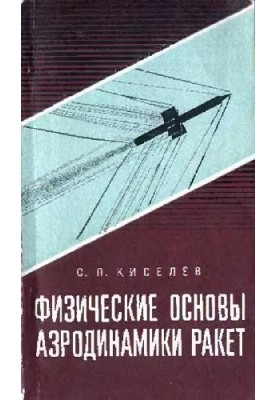Physical foundations of rocket aerodynamics
 Instant download
Instant download
after payment (24/7)
 Wide range of formats
Wide range of formats
(for all gadgets)
 Full book
Full book
(including for Apple and Android)
The book "Physical Foundations of Rocket Aerodynamics" by Kiselev is a fascinating and deep immersion in the world of aerodynamics, which will become an indispensable tool for both students and professionals in the field of rocketry and aviation. If you’ve ever thought about how rockets work, how they overcome air resistance, and what physical laws underlie their flight, this book will be a real discovery for you. The author, Kiselev, is known for his deep understanding of physics and engineering, which makes his work especially valuable for those who seek to understand not only theory, but also the practical aspects of aerodynamics. The book discusses the basic principles on which aerodynamic processes are based that affect the movement of missiles in the atmosphere. You will learn about key concepts such as lift, resistance, airflow and many others that play a crucial role in the design and testing of missile systems. The book will be of interest not only to students of technical specialties, but also to everyone who is fond of aerospace topics. Engineers, designers, as well as fans of aviation and cosmonautics will find in it a lot of useful information. If you want to deepen your knowledge in the field of aerodynamics, understand how physical laws affect the design of rockets, or are just interested in how humanity conquers space, the "Physical Foundations of Rocket Aerodynamics" will be an excellent choice for you. The topics raised in the book cover a wide range of issues, ranging from basic physical principles to the complex calculations needed to design rockets. Kiselev not only explains how these principles work, but also shows how they are applied in practice. This makes the book a valuable resource for those who want not only to gain theoretical knowledge, but also to learn how to apply them in real conditions. The author's style is clear and accessible. It skillfully combines complex scientific concepts with simple explanations, which makes the material understandable even for those who do not have deep knowledge in physics. Kiselev uses many examples and illustrations, which helps the reader to better assimilate the material and see how theoretical aspects are applied in real life. If you are interested in books such as “Aerodynamics for engineers” or “Space flights: from idea to implementation”, the “Physical foundations of aerodynamics of rockets” will be a logical continuation of your reading. This book will not only expand your knowledge, but also inspire new ideas and projects in the field of aerospace engineering. In conclusion, the “Physical Foundations of Rocket Aerodynamics” is not just a textbook, but a real find for anyone who wants to understand how the world of missiles and aviation works. It opens doors to the exciting world of aerodynamics and will help you become more confident in your knowledge and skills in this challenging but fascinating field. Do not miss the opportunity to get acquainted with this work and immerse yourself in the study of the foundations that are behind one of the most exciting achievements of mankind - flying into space.
LF/71220323/R
Data sheet
- Name of the Author
- Киселев С.П.
- Language
- Russian

















